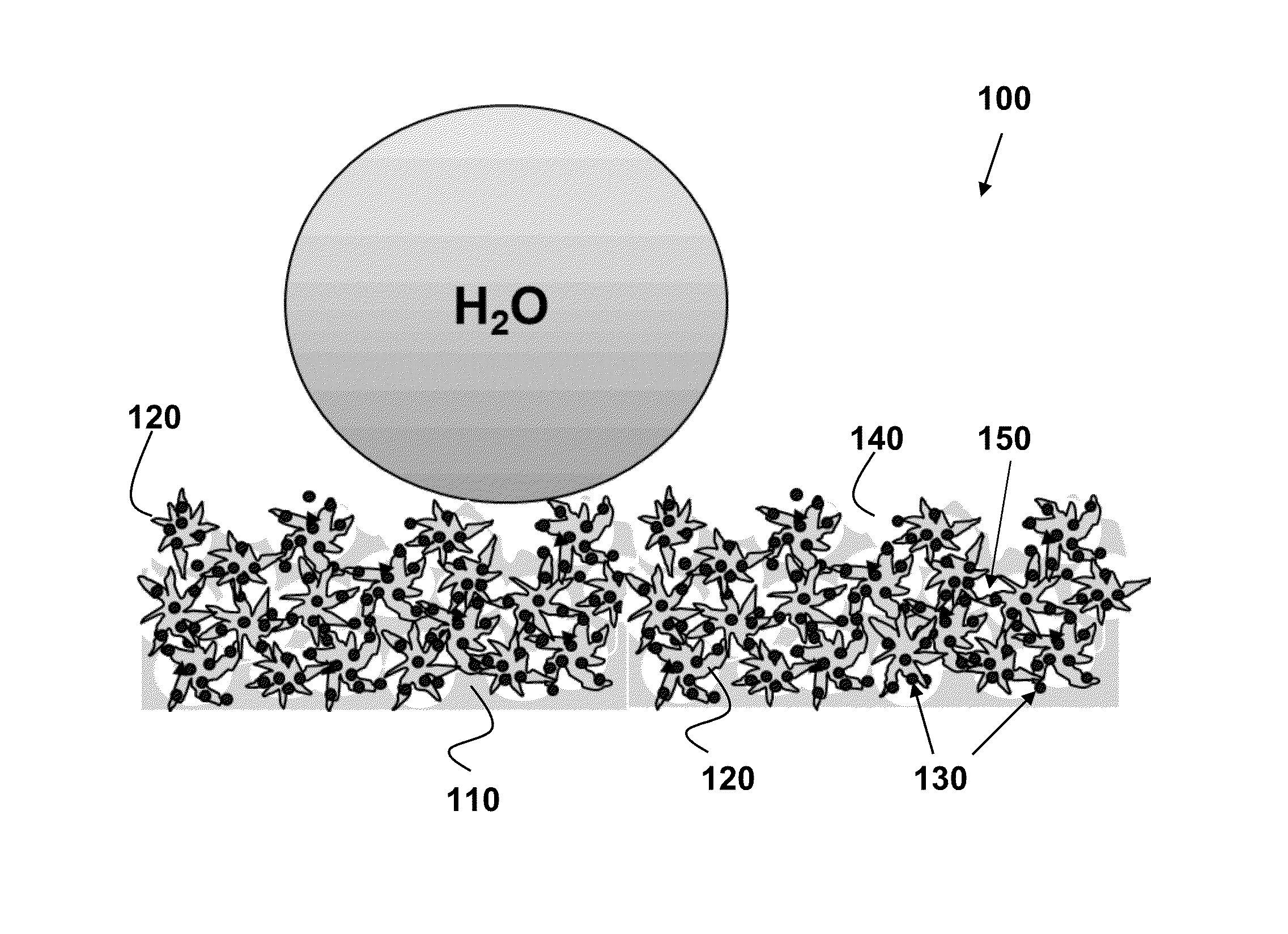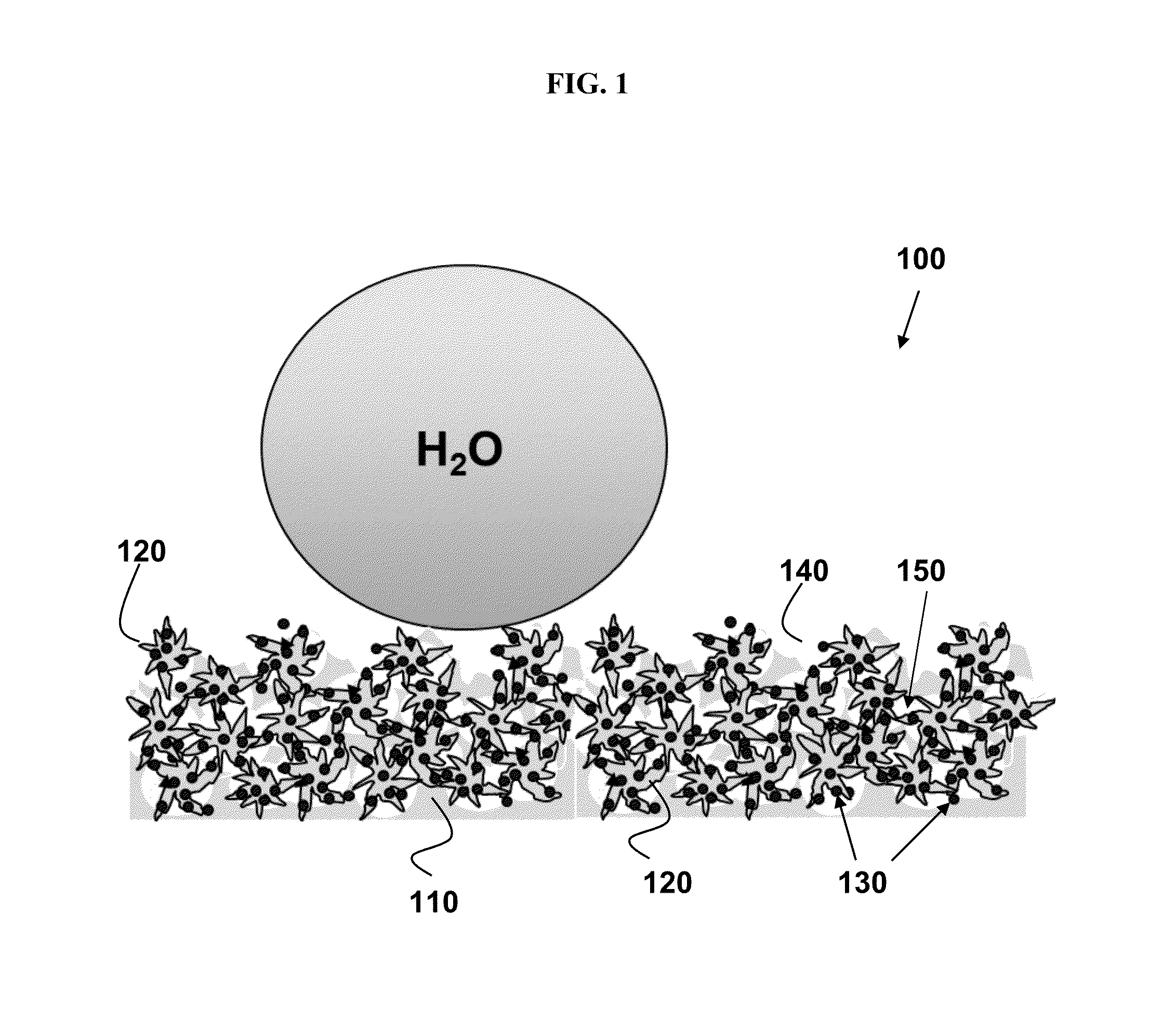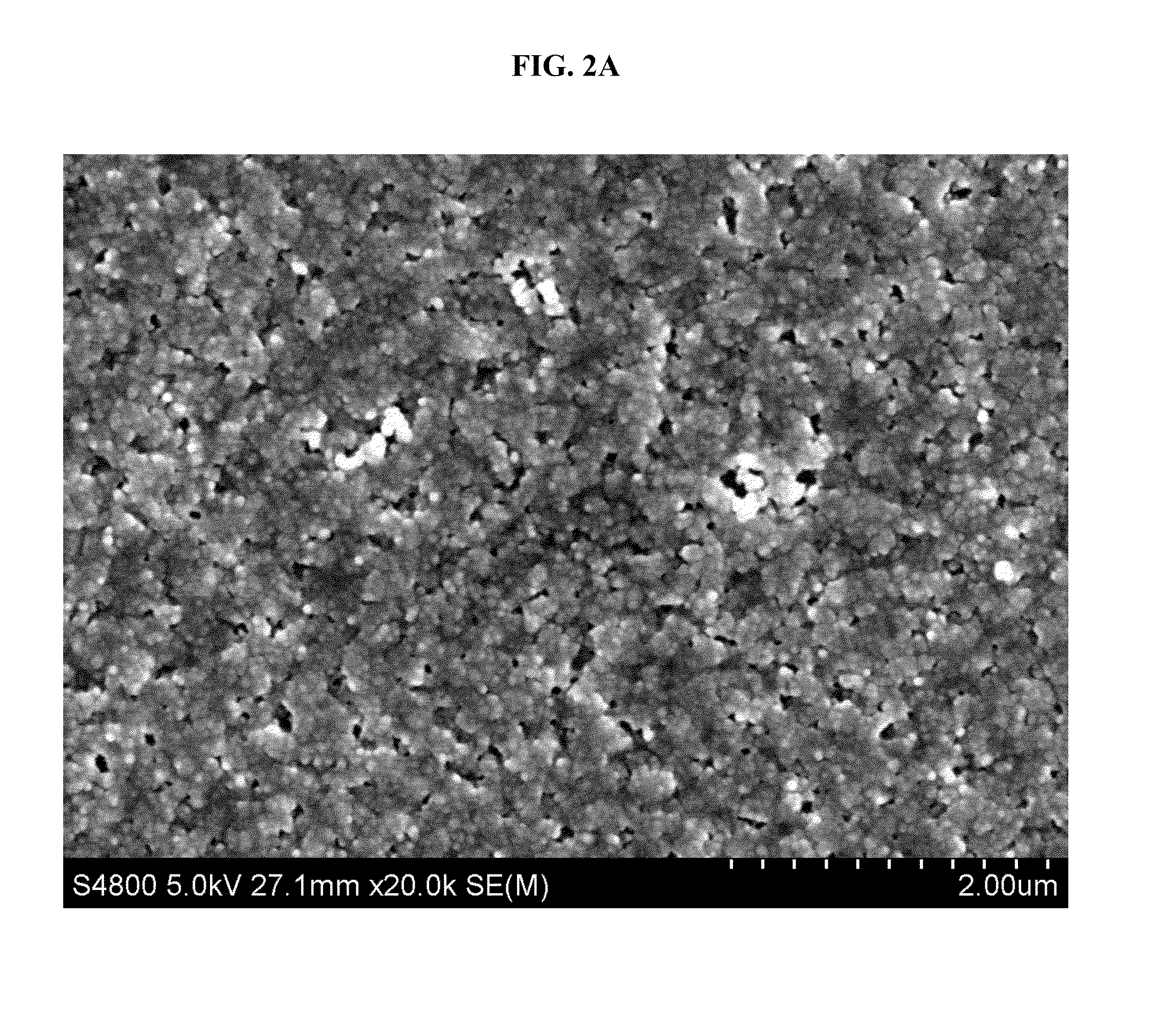Transparent Anti-icing coatings
a technology of anti-icing coatings and transparent coatings, which is applied in the direction of coatings, other chemical processes, synthetic resin layered products, etc., can solve the problems of stalling the airfoil of aircraft, affecting the safety of aircraft, etc., and the deicing or anti-icing fluid does not provide extended (e.g., more than about one hour) and the effect of anti-icing
- Summary
- Abstract
- Description
- Claims
- Application Information
AI Technical Summary
Benefits of technology
Problems solved by technology
Method used
Image
Examples
example 1
Hydrophobic Asymmetric Templates
[0157]Nissan Chemical MEK-ST-UP (60 g) is mixed with 8.12 g of n-octadecyldimethylchlorosilane (70 wt % in toluene). The clear yellow solution is placed in a Teflon jar under argon and heated at 65° C. for 3 days. It becomes an opaque white gel. The gel is centrifuged to remove excess solvent, the supernatant is discarded, and the precipitate is re-dissolved in toluene and becomes a light yellow, clear liquid. Then acetone is added until the solution becomes opaque and the suspension is centrifuged to remove excess solvent, the supernatant is discarded, and the precipitate is re-dissolved in toluene. The precipitation and re-dissolution is repeated two more times until the solution of silica nanorods in toluene is colorless. Finally, 1.641 g of solution is placed in a 130° C. oven to evaporate all solvent and determine the solid content of the solution, which is calculated as 14.69 wt %.
example 2
Transparent Anti-Wetting and Anti-Icing Coating
[0158]BAC900 (0.960 g) is mixed with BYK-LP X 21261 (1.5 g) and the Example 1 hydrophobic asymmetric templates (13.61 g). This suspension is mixed for 1 hr and then 0.575 g of PC-233 is added. The suspension is mixed for ten minutes and then applied on a glass slide with a 10 mil (about 250 μm) draw down bar. The coating is allowed to dry and then cured for 4 hours in an 80° C. oven. This coating has a 1:0.5:2 polyurethane: colloidal silica: asymmetric templates dried mass ratio.
[0159]FIG. 2A shows a SEM image of the top of this Example 2 coating, and FIG. 2B shows a cut-away view of this coating. The SEM in FIG. 2A shows roughness from asymmetric templates on the surface, and the SEM in FIG. 2B shows a uniform and dense coating. The coating is transparent as demonstrated by the light transmission data in FIG. 6, showing 96% average transmission from 400 to 900 nm.
example 3
Transparent Anti-Wetting and Anti-Icing Coating
[0160]BAC900 (0.640 g) is mixed with BYK-LP X 21261 (1.0 g) and the Example 1 hydrophobic asymmetric templates (13.61 g). This suspension is mixed for 1 hr and then 0.383 g of PC-233 is added. The suspension is mixed for ten minutes and then applied on a glass slide with a 10 mil draw down bar. The coating is allowed to dry and then cured for 4 hours in an 80° C. oven. This coating has a 1:0.5:3 polyurethane:colloidal silica:asymmetric templates dried mass ratio.
[0161]FIG. 3A shows a SEM image of the top of this Example 3 coating, and FIG. 3B shows a cut-away view of this coating. FIG. 3A reveals roughness from asymmetric templates on the surface, while FIG. 3B shows a uniform coating. The Example 3 coating SEM image appears to show greater porosity (voids at surface) than the Example 2 coating. This porosity will cause light scattering that results in less light transmission through the coating. Furthermore, the coating is less dense i...
PUM
| Property | Measurement | Unit |
|---|---|---|
| length scale | aaaaa | aaaaa |
| length scale | aaaaa | aaaaa |
| size | aaaaa | aaaaa |
Abstract
Description
Claims
Application Information
 Login to View More
Login to View More - R&D
- Intellectual Property
- Life Sciences
- Materials
- Tech Scout
- Unparalleled Data Quality
- Higher Quality Content
- 60% Fewer Hallucinations
Browse by: Latest US Patents, China's latest patents, Technical Efficacy Thesaurus, Application Domain, Technology Topic, Popular Technical Reports.
© 2025 PatSnap. All rights reserved.Legal|Privacy policy|Modern Slavery Act Transparency Statement|Sitemap|About US| Contact US: help@patsnap.com



